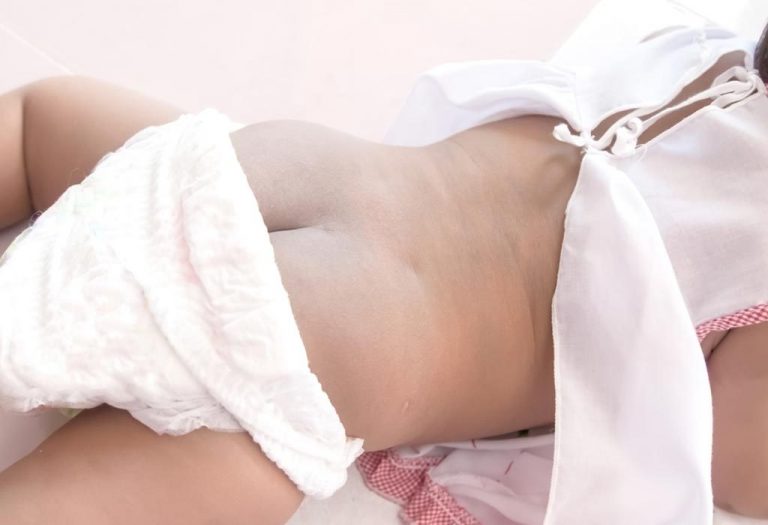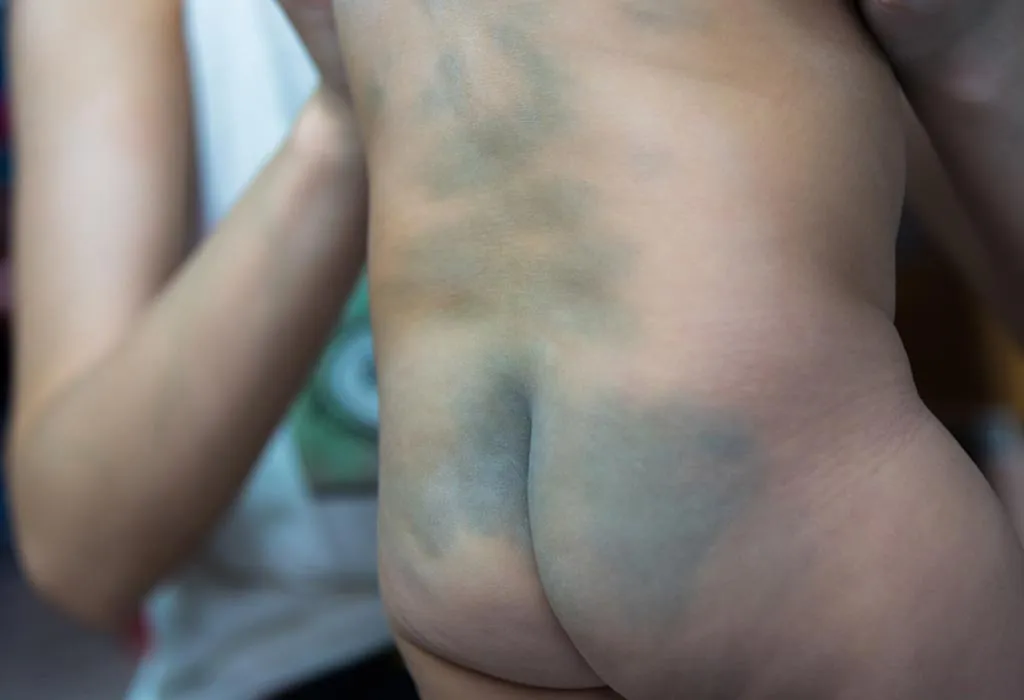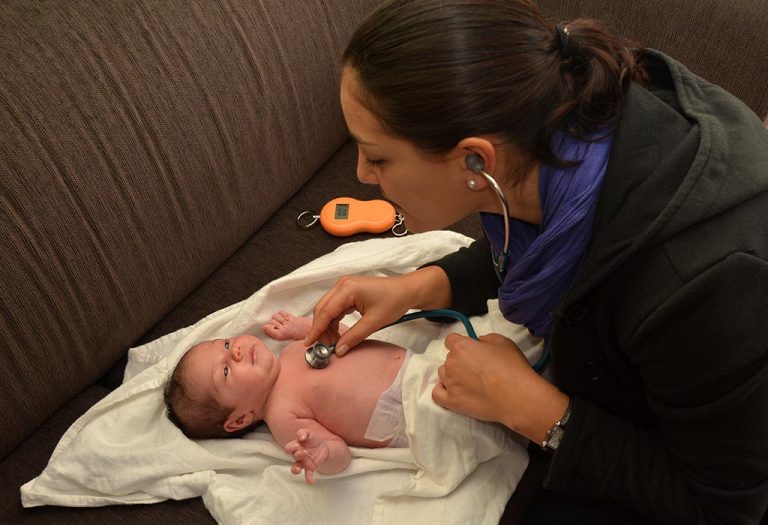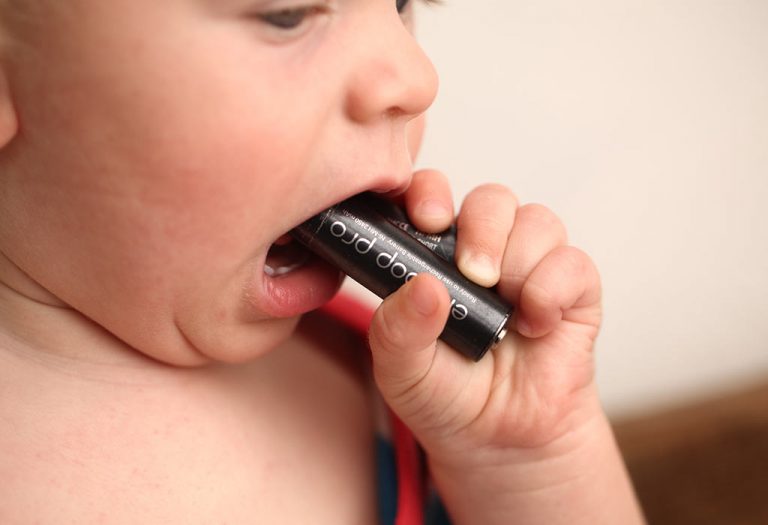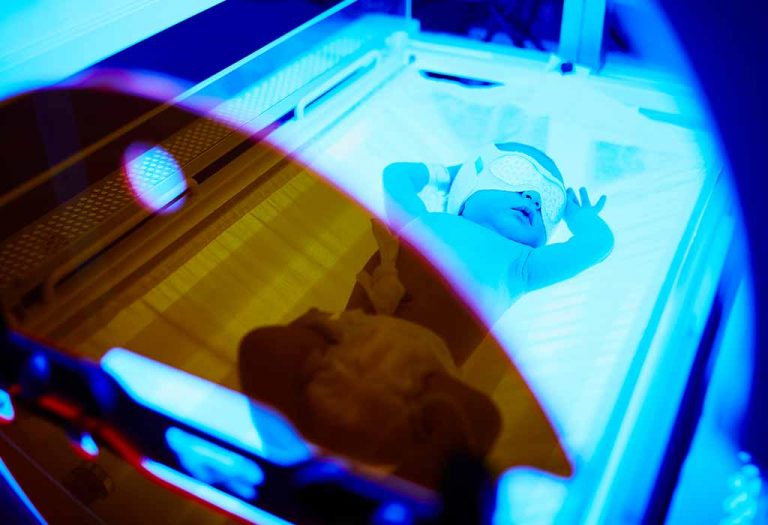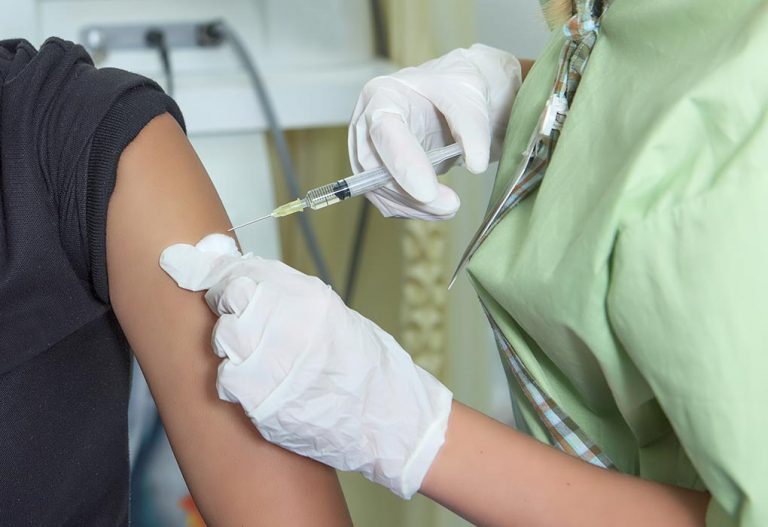Mongolian Spot – Causes and Treatment

Birthmarks in newborns are common, but when they are as prominent as Mongolian spots, they can be a cause of concern to parents. They often worry whether the Mongolian birthmark is permanent or could go away on its own. It’s important to know that these birthmarks pose no risk of cancer or health danger to babies. Mongolian spots in newborns are common in Asian and African ethnic backgrounds and disappear as babies grow older (1). If you spot one on your newborn baby, we recommend giving this article a read to understand how they form and what their prognosis is.
What Are Mongolian Spots?
Mongolian spots are a type of birthmark often present at birth or appear soon within the first few weeks of life (2). They are also termed slate grey nevi and congenital dermal melanocytosis. These spots are bluish-grey in colour and can vary from dark blue to lighter grey (3). The colour is normally uniform over the whole area of the birthmark. Mongolian spots can form in various sizes; most are a few centimetres across without clearly defined edges or shapes. They are not raised above the skin and are flat. They typically occur on the lower back or the buttocks of the baby and occasionally form on the arms or legs. Mongolian spots are not a cause of concern as they don’t pose any health risks. Babies who have them will outgrow the spots as they get older, possibly by the time they reach their teens.
How Common Are Mongolian Blue Spots, and Who Is at Risk of Getting It?
Mongolian spots are usually found in babies of African, Middle Eastern, and Asian descent and are found in about three-quarters of the children from these regions (1). Interestingly, the term Mongolian spot was coined by Edwin Baelz in 1885, who was a German professor. He believed only the non-Caucasians and Mongols developed these marks. The blue-grey spots are seen in approximately 80% of Asians, 90% of Africans and Native Americans and in 70% of Hispanics. Full-term babies are more likely to have blue-grey spots than the preterm ones. Both boys and girls have an almost equal chance of getting these birthmarks, but some studies suggest the chances of Mongolian spots are slightly higher in boys.
What Causes Mongolian Spots on Babies?
When a baby is in the womb, the cells that eventually develop into its skin move to the surface. During the 11th and 14th week of pregnancy, a specific type of cells called dermal melanocytes (cells that produce the pigment melanin) move up to the top layer of the skin. These dermal cells typically disappear by the 20th week of pregnancy. Experts believe that when these cells do not move to the top layer of the skin and disappear, they form the Mongolian spots at birth. As these melanocytes are trapped deep beneath the layers of skin, they take on a bluish-grey shade (1).
The amount of melanin (the pigment responsible for skin colour) in the skin normally determines the colour of the birthmark. Babies with a darker shade of skin are more likely to have these types of birthmarks.
What Do the Spots Look Like?
Because of their bluish appearance, Mongolian marks on babies can be easily mistaken for bruises, especially if they appear at atypical places (4).
Features of Mongolian birthmarks (5):
- They are blue or bluish-grey in colour.
- Their texture is normal, similar to the surrounding skin.
- Mongolian spots are typically 2-8 cm wide.
- These marks have an irregular shape without defined edges.
- They are present at birth or appear soon after birth.
- Mongolian spots most commonly appear on the lower back or buttocks.
Are the Spots Dangerous?
Mongolian spots are harmless and do not need any medical intervention (6). They are not cancerous in nature or indicative of any disease or disorder. In most cases, the spots fade over the years and disappear by the time the child is a teenager. However, a small number of cases have been associated with rare metabolic conditions such as:
- Hunter’s syndrome
- Hurler’s disease
- Niemann-Pick disease
- Mannosidosis
- Mucolipidosis
The risks of the above are more likely in babies who have large, widespread Mongolian spots on their back and buttocks. Occasionally they may be mistaken for the symptoms of another serious spinal condition called spina bifida occulta. However, the spots related to that are reddish in colour and not the characteristic blue-grey colour of Mongolian spots.
Do Mongolian Spots Go Away?
Usually, Mongolian blue spots go away on their own around the age of 3 to 5. However, it is not for all babies. Some babies carry their spots into their adulthood, which can later be removed using laser technology.
If they are a little bothersome, you can hide them under makeup or protective clothing like scarves or high-neck or full-sleeve clothing.
How to Treat Mongolian Spots in Newborn?
Mongolian spots do not need any kind of special care or treatment. Since they are not painful, they do not pose any issues associated with the skin. As they appear mostly on the lower back and buttocks, they are not visible most of the times. However, if the spots persist beyond the teenage years and into adulthood, removal procedures can be considered.
Laser removal procedures have shown good results in removing the spots in adults. One study in Lasers in Medical Science shows that people got positive results with the Alexandrite laser. One other study in Dermatologic Surgery found that Mongolian spots treatment responded very well to the use of the Alexandrite laser if a person is younger than 20 years old. It’s also found that skin bleaching creams with other types of lasers also work well along with the Alexandrite laser.
Why Should Parents Take Pictures of the Spots at Birth?
Mongolian spots being dark blue or bluish-grey in colour can easily be mistaken for “spank marks” or abuse. It might give a false sign of child abuse to teachers or daycare providers which can lead to unintended complications. Taking regular photographs of the spots from childbirth can be used to avoid these misunderstandings. Photographs are also a good way to track the disappearance of the spots or to notice any new unrelated mark that might pose a health risk.
When to Seek Medical Help?
Most Mongolian spots fade over time and pose no threat to the child. However, if you notice that any spot changes colour or shape it can be something else and it’s imperative that you get it looked by a dermatologist. Medical help is also an option if the marks are prominent in teens and is a cause for embarrassment to your child.
FAQs
1. Where do Mongolian spots usually occur?
You’ll mostly find the Mongolian spots lumbosacral area, i.e., your baby’s buttocks, lower back, and shoulders (1).
2. Do Mongolian spots hurt?
Although Mongolian spots appear with a bluish colour, similar to that of bruises, they actually do not hurt. Neither do they change their colour or shape very quickly compared to bruises.
3. What are the reasons for the development of congenital dermal melanocytosis?
Congenital dermal melanocytosis are a result of cluster formation of skin pigment cells called melanocytes in the deeper layers of the baby’s skin. These appear as blue, grey, greyish-blue, greyish black, or purple (3).
Moreover, don’t let Mongolian spots bother you, as they are harmless and are known to fade on their own.
References/Resources:
1. Gupta D, Thappa DM. Mongolian spots: How important are they? World J Clin Cases.; PubMed Central; https://www.ncbi.nlm.nih.gov/pmc/articles/PMC3856299/; November 2013
2. Mongolian Spot; American Osteopathic College of Dermatology; https://www.aocd.org/page/MongolianSpot
3. Birthmarks in Infants; Johns Hopkins Medicine; https://www.hopkinsmedicine.org/health/conditions-and-diseases/birthmarks-in-infants
4. Gupta. D, Thappa. D. M; Mongolian spots; Indian Journal of Dermatology, Venereology, and Leprology; https://ijdvl.com/mongolian-spots/.; 2013
5. Congenital dermal melanocytosis; The Royal Children’s Hospital Melbourne; https://www.rch.org.au/kidsinfo/fact_sheets/Congenital_dermal_melanocytosis/
6. Chua. R.F, Pico. J; Dermal Melanocytosis; StatPearls Publishing; PubMed; https://pubmed.ncbi.nlm.nih.gov/32491340/; January 2024
Also Read:
Eczema in Babies
Soft Spot on a Baby’s Head
Milia in Newborn and Babies
Baby’s Soft Spot (Sunken Fontanelles)
Was This Article Helpful?
Parenting is a huge responsibility, for you as a caregiver, but also for us as a parenting content platform. We understand that and take our responsibility of creating credible content seriously. FirstCry Parenting articles are written and published only after extensive research using factually sound references to deliver quality content that is accurate, validated by experts, and completely reliable. To understand how we go about creating content that is credible, read our editorial policy here.






